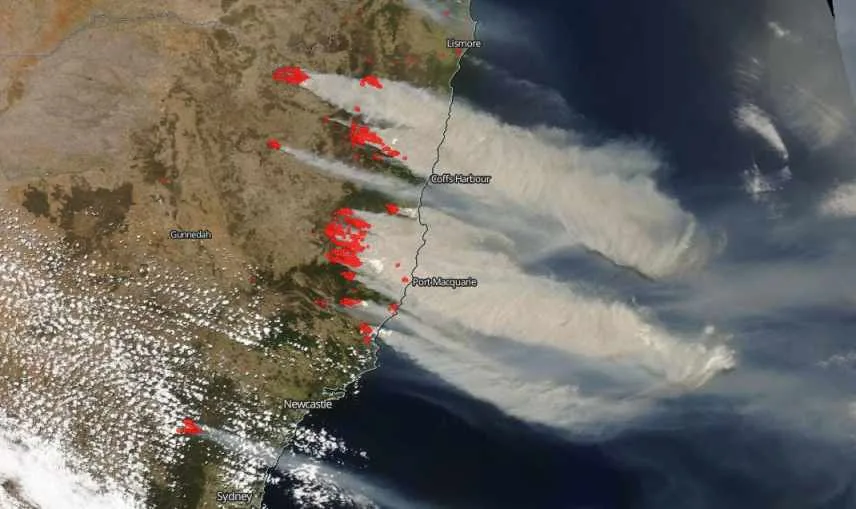As climate change worsens, fires are likely to become more intense and frequent. We need to find new ways of managing forest fires to prevent catastrophic events.
Satellite data can help with this task. It helps us identify where and when vegetation like grass and leaves is forming a continuous plume of fuel that is dry enough for a catastrophic bushfire to ignite and set in place.
At the moment, Australia is relying on foreign satellites to gather this information. These satellites are not designed to assess our unique bush landscape and its highly flammable eucalyptus. We need to develop bespoke Australian satellites to better prevent bushfires.
Today, a roadmap released by the Australian Space Agency outlines their priorities for Earth observation. It lists national monitoring of bushfire fuel levels as a primary “mission purpose” – and recognises the need for satellites specifically built to monitor Australia’s fire conditions from space.
We are developing the Australian satellite mission to monitor fuel conditions. This work helped create a roadmap for the Australian Space Agency.
The Australian Space Agency Earth Observation from Space Roadmap is the second in a series of 7 roadmaps and outlines a 10-year plan to support the growth of this priority area . This roadmap provides a roadmap for the industry to coordinate and create advanced resources and technologies that support essential jobs and services in the future.
The Earth Observation from Space Roadmap provides a pathway to:
- securing access to critical EO data
- see complementary Australian EO capabilities making valued contributions to the global observing system
- enable international collaboration with industry.
Fuel information is crucial for two reasons. In the run-up to bushfires, it helps fire authorities decide where and when to carry out recommended incineration to reduce the amount of flammable material in the landscape and where to focus on communicating. And when bushfires break out, he helps authorities plan where to deploy staff and equipment.
Fuel status can be collected by a variety of methods, including ground-based samples, observations from an airplane or drone, and satellite imagery currently available.
But overall, these methods can only be used in small areas, are slow and time consuming, or may be inaccurate. On the other hand, dedicated fuel monitoring satellites can cover Australia with high precision within hours or days.
Low soil and vegetation moisture, due to dry conditions, was the main cause of catastrophic bushfires during the Black Summer 2019-20 period.
Two investigations into these fires – the Royal National Commission on Natural Disasters and the New South Wales Parliamentary Investigation – highlighted the need for a continental map of vegetative fuel states.
After the black summer fires, the Australian Space Agency identified the need for satellite monitoring of fuel conditions, which provided faster and more frequent data, wider coverage and improved resolution. It raised the prospect of new satellite missions specific to forest fire risk management.
Satellite sensors systematically observe the Earth’s surface, allowing fuel conditions to be analyzed over time.
To date, Australia has relied heavily on Earth observation data provided by foreign satellites. For example, CSIRO bought a 10% time share on the NovaSAR-1 satellite developed in the United Kingdom.
This satellite can take images of the Earth through clouds and smoke, day or night. But it cannot provide regular operational support to the Australian fire service.
Other satellites currently in space aren’t ideal for distinguishing the individual compounds that make our native eucalyptus so flammable – such as water content, lignin, cellulose, and oil content. This is because they lack the narrow spectral bands on the part of the electromagnetic spectrum where these compounds can best be detected.
This limits Australia’s ability to accurately predict fuel conditions. A space mission dedicated to monitoring fuel loads in Australia is needed to improve the management and prevention of bushfires.







